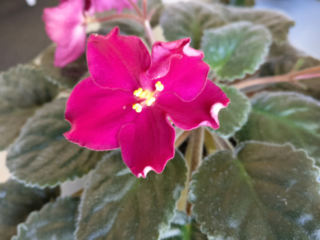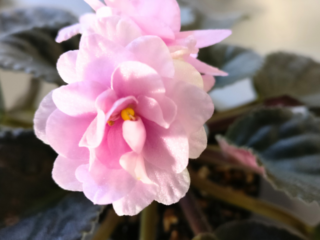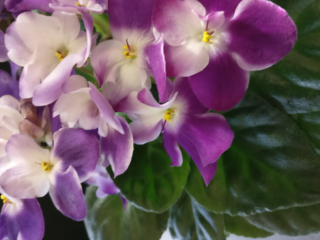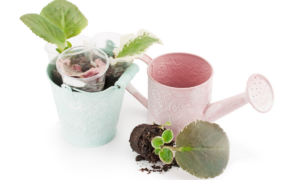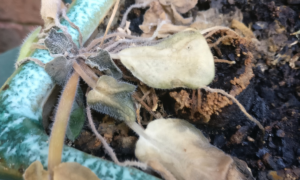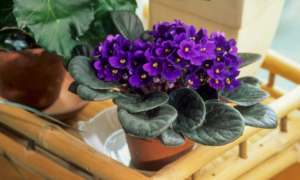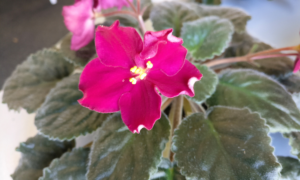African violets are a beloved houseplant with stunning purple blooms and velvety leaves. But did you know that these dainty plants can also be grown outdoors in Florida? With the right conditions, it is possible to grow african violets outside in Florida! If you’re looking for an easy-care addition to your garden or outdoor living space then this post will provide all of the information needed. This is one of our most common questions!
Table of Contents:
- Growing Conditions
- Propagation
- Care Requirements
- Pests & Diseases
- FAQs in Relation to Can You Grow African Violets Outside in Florida?
- Conclusion
Growing Conditions
African Violets are a popular houseplant, but they can also be grown outdoors in Florida. The ideal growing conditions for African Violets include temperatures between 65-75°F (18-24°C), bright indirect light and well-draining soil.
Temperatures above this may cause the plant to become stressed and its growth will slow down or stop altogether. In winter months, when temperatures drop below 65°F (18°C) at night, it is best to move your plants indoors until the weather warms up again.
So, if you live in Florida, you can successfully grow your African violets outdoors as long as the temperature consistently stays within the 65-75°F (18-24°C) range. Any temperatures outside these ranges will mean bringing your African violets indoors.
Light levels should be bright but indirect; too much direct sunlight – especially outdoor Florida sunlight – can burn the leaves of an African Violet and cause them to turn yellow or brown. If you want your plants to bloom more often then try placing them in very dappled outdoor light where they will get plenty of natural light during the day without being exposed directly to harsh rays from the sun.

The soil used for growing African Violets must have good drainage so that excess water doesn’t stay around the roots which could lead to root rot and other problems like fungus gnats or mold spores in damp areas of your home or garden.
This is why we recommend you grow your African violets in pots, even if you’re growing them outdoors. A mix of peat moss, perlite and vermiculite works well as it allows air circulation while still retaining moisture in order for your plants’ roots to absorb what they need without becoming waterlogged.
Finally, make sure you use pots with drainage holes so any excess water can escape easily after watering. This helps prevent root rot by keeping moisture away from sensitive root systems.
Growing your African violets in pots, even when outdoors, means that you can move them indoors if outdoor temperatures become hostile.
African violets need a lot of indirect light, humidity and warmth to thrive. To ensure the best results when growing african violets outside in Florida, it is important to bring them inside when conditions get too hot or too cold.
Care Requirements
In Florida, African Violets thrive in bright indirect sunlight and temperatures between 65-75 degrees Fahrenheit. They should be planted in well-draining soil that is slightly acidic (pH 6 to 6.5).
Watering your African Violet plants is important for their health and growth. Water them regularly with lukewarm water when the top inch of soil feels dry to the touch.
Even outside, do not allow the plant to sit in standing water as this can cause root rot or other diseases. If you live in an area of Florida with hard water, use distilled or rainwater instead of tap water as it contains fewer minerals which could build up over time and damage your plants’ roots.
Fertilizing your African Violets is essential for healthy growth and blooms throughout the year, even when you keep them outdoors. Use a balanced fertilizer such as 10-10-10 every two weeks during spring and summer months, then switch to a high phosphorus fertilizer such as 5-15-30 once per month during fall and winter months when flowering begins again after dormancy period ends.
Always dilute fertilizers according to package instructions before applying them directly onto leaves or stems; otherwise, you risk burning delicate foliage!

Pests & Diseases
Like all plants, African Violets can be susceptible to pests and diseases that can damage or even kill them if left untreated. This is especially so when growing outdoors.
The most common pest affecting African Violets is the mealybug. Mealybugs are small insects that feed on plant sap and excrete honeydew which attracts ants. To prevent an infestation, regularly inspect your violets for signs of mealybugs such as white cottony masses on the leaves or stems. If you find any, use rubbing alcohol to remove them from the plant’s surface.
Aphids are another common pest found on African Violets in Florida gardens. These tiny bugs suck out moisture from the leaves causing yellowing or wilting of foliage and distorted growth patterns in young plants. To control aphid populations, try spraying your violets with insecticidal soap or neem oil every few weeks during warmer months when aphids tend to be more active outdoors.

Fungal diseases such as powdery mildew can also affect African Violets grown outside in Florida’s humid climate conditions. Powdery mildew appears as a white powder-like substance on the leaves and stems of affected plants which causes discoloration and stunted growth over time if not treated promptly with fungicides specifically designed for this type of disease.
In addition, make sure your violets have adequate air circulation by spacing them at least 12 inches apart when planting outdoors. This will help reduce humidity levels around each individual plant, making it less likely for fungal spores to spread quickly between multiple specimens.
Finally, root rot caused by overwatering is one of the most common problems experienced by novice gardeners growing African Violets outside in Florida. The best way to avoid this issue is to check soil moisture levels before watering each week; if it feels damp then skip watering until next week instead.
Additionally, make sure you are using well-draining potting mix that won’t become waterlogged easily after heavy rains so roots don’t stay wet too long leading up to potential root rot issues down the line.
By taking proper precautions, you can help protect your African violets from pests and diseases. Next, let’s look at the best conditions for growing African violets outdoors in Florida.
FAQs in Relation to Can You Grow African Violets Outside in Florida?
How do you take care of African violets in Florida?
African violets are a beautiful and popular houseplant that can be grown in Florida outdoors. They require bright, indirect light and temperatures between 65-75°F. When outside this temperature range, bring your African violets indoors.
Watering should be done from the bottom of the pot, allowing the soil to become completely saturated before draining any excess water away.
Fertilize with a balanced fertilizer every two weeks during their growing season (spring through fall). Avoid overwatering or underwatering as this can cause leaf loss or root rot.
Keep an eye out for pests such as mealybugs and spider mites, treating them with insecticidal soap if necessary. With proper care, African violets will thrive in Florida!
How hot is too hot for African violets?
African violets prefer temperatures between 65-75°F (18-24°C). Temperatures higher than 80°F (27°C) can cause wilting and leaf burn. Direct sunlight should also be avoided as it can scorch the leaves. The best way to keep African violets happy is to provide them with bright, indirect light and moderate temperatures.

Are African violets indoor or outdoor?
African violets are typically grown as houseplants indoors. They require bright, indirect light and temperatures between 65-75°F (18-24°C). African violets need to be kept moist but not wet, so water regularly but allow the soil to dry out slightly between watering.
Avoid drafts and direct sunlight which can cause scorching of leaves or faded blooms. With proper care, African violets will bloom year round with beautiful flowers in shades of pink, purple, white and blue.
Can African violets tolerate full sun?
No, African violets cannot tolerate full sun. They prefer bright indirect light and should be kept out of direct sunlight to prevent leaf burn or other damage. When grown outdoors, they should be placed in a shady spot with filtered sunlight for best results.
Too much sun can cause the leaves to turn yellow and brown and may even kill the plant if exposed for too long.
Conclusion
In conclusion, African Violets can be grown outside in Florida with the right conditions and care. With proper soil, light exposure, temperature and humidity levels as well as regular watering and fertilizing you can successfully grow these beautiful plants outdoors.
Additionally, it is important to keep an eye out for pests or diseases that may affect your violets so they remain healthy. So, the answer to “can you grow african violets outside in florida?” is yes! But your plants are likely to need some indoor time throughout the year.
If you live in Florida and have ever wanted to grow African Violets, now is the time! With proper care and attention, these delicate flowers can thrive even in tropical climates.
Get started by learning how to propagate them from cuttings or seeds, as well as how to best provide light, water and fertilizer for your plants. Don’t let the heat of summer get in the way of having a beautiful indoor garden – join us today on our mission to help everyone learn more about growing African Violets outside in your corner of the beautiful state of Florida!

